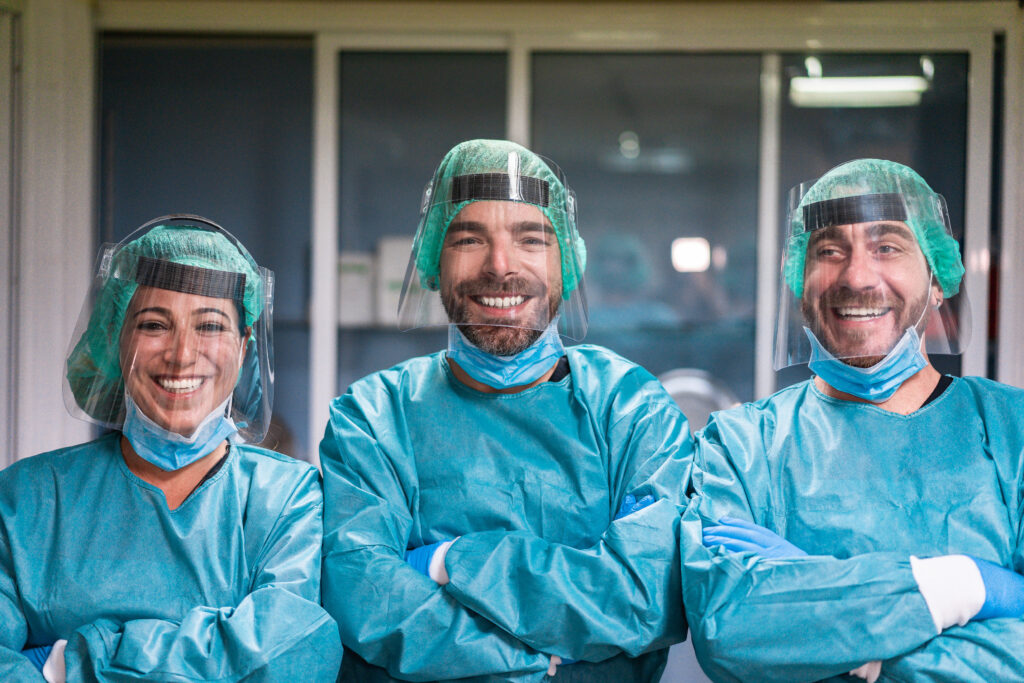COVID-19 has taken a toll on medical facilities across the country, which were forced to pause elective procedures as the pandemic spread. As recently as May, the International Travel & Health Insurance Journal (ITIJ) reported that U.S. hospitals were losing around $50 billion a month due to the cancellation of elective procedures and the cost of treating COVID patients.
As restrictions on elective procedures begin to be lifted, medical facilities are faced with some difficult decisions about when — and how — to reopen safely. Patients are equally unsure, and many are putting off procedures for fear of contracting the virus in a medical facility.
The Society for Cardiovascular Angiography & Intervention (SCAI) reports that 40 percent of Americans view going to the hospital as “risky behavior,” and are more afraid of contracting COVID-19 than getting medical treatment for emergencies like a heart attack or stroke.
As medical facilities navigate these uncharted waters, there are several considerations that can help ensure a safe reopening that protects the health of both patients and staff.

Timing
Once executive orders allow a medical facility to reopen, tough decisions about timing must be made. How can a medical facility determine when it’s safe to start elective surgeries?
The American College of Surgeons (ACS) lays out some helpful guidelines around the timing for reopening elective surgeries. The association recommends waiting until there is a sustained reduction in the rate of new COVID-19 cases in the area for at least 14 days.
ACS also recommends ensuring that the facility has the appropriate number of ICU and non-ICU beds, PPE, ventilators, medications, anesthetics, and medical surgical supplies. In addition, facilities should have enough trained staff to treat all non-elective patients without resorting to a crisis standard of care.
Coronavirus Precautions
Preventing COVID from becoming a HAI is, of course, of crucial importance to both staff and patients. And while medical facilities can’t exactly go to the extremes of the NBA to create a bubble environment, there are several precautions that can keep coronavirus out of the OR.
Ensuring the appropriate use of PPE and coronavirus-focused safety procedures are a given, but how can medical facilities ensure that they don’t unknowingly operate on a patient who has the virus? Fierce Healthcare suggests booking surgeries at least 14 days out (10 at a minimum).
Any patient that’s added to the surgical schedule should be tested for COVID-19. If a test comes back positive, the patient should be removed from the schedule and added back only once they’ve tested negative twice. After they’re tested, all patients should be instructed to self-isolate until the date of their procedure.
Prioritizing Procedures
Once they’re up and running, medical facilities must also determine how to prioritize procedures. Facilities must consider resources and determine which surgeries will have the least impact on COVID-19 care. It’s also crucial to ensure that patients with the most pressing needs are treated first.
Reference a new guide by the Michigan Value Collaborative (MVC) designed to help facilities determine which operations to restart first based on resource utilization. Coordinated out of the University of Michigan and funded by Blue Cross Blue Shield of Michigan, MVC based its recommendations on seven years of data from 17 common operations in dozens of hospitals.
Patient Safety
In the current landscape, it’s natural for medical facilities to be hyper focused on avoiding the transmission of coronavirus. However, at a time when staff may be either out-of-practice or spread especially thin, it’s imperative for hospitals to review safety policies and procedures in order to maintain compliance standards and ensure patient safety that goes far beyond viral transmission.
Every year, nearly 444,000 individuals die due to avoidable hospital errors — and that’s without the distraction and added stress of a pandemic sweeping the globe. “Never events” often come from unexpected sources, such as burns and fires caused by fiber optic light cables.
Facilities should be especially vigilant as they reopen their ORs for elective surgeries, and ensure that appropriate safety procedures are reviewed and optimized.
Communicate Safety Measures to Patients
In these uncertain times when patient fears are at an all-time high, it’s important for medical facilities to reassure patients that they will be safe in the facility. Safety precautions for coronavirus — and beyond — should be proactively communicated to patients, especially those that had to cancel an elective procedure and may be hesitant about rescheduling.
This communication may involve the marketing department and updated copy on the website, or more personal phone calls. With increased patient anxiety, more individuals are likely to consult popular online hospital ratings like Leapfrog’s Safety Grade. Forward-thinking facilities that have the proper safety precautions in place can keep their safety grades up and reassure tentative patients with open and honest communication.
Need help fire-proofing your OR as you get back to elective surgeries? GloShield offers an easy to use, inexpensive solution for potentially dangerous fiber-optic light cables. Visit our contact page to get connected with a team member about surgical fire safety, and to learn about our PPE offerings during the COVID-19 pandemic.
